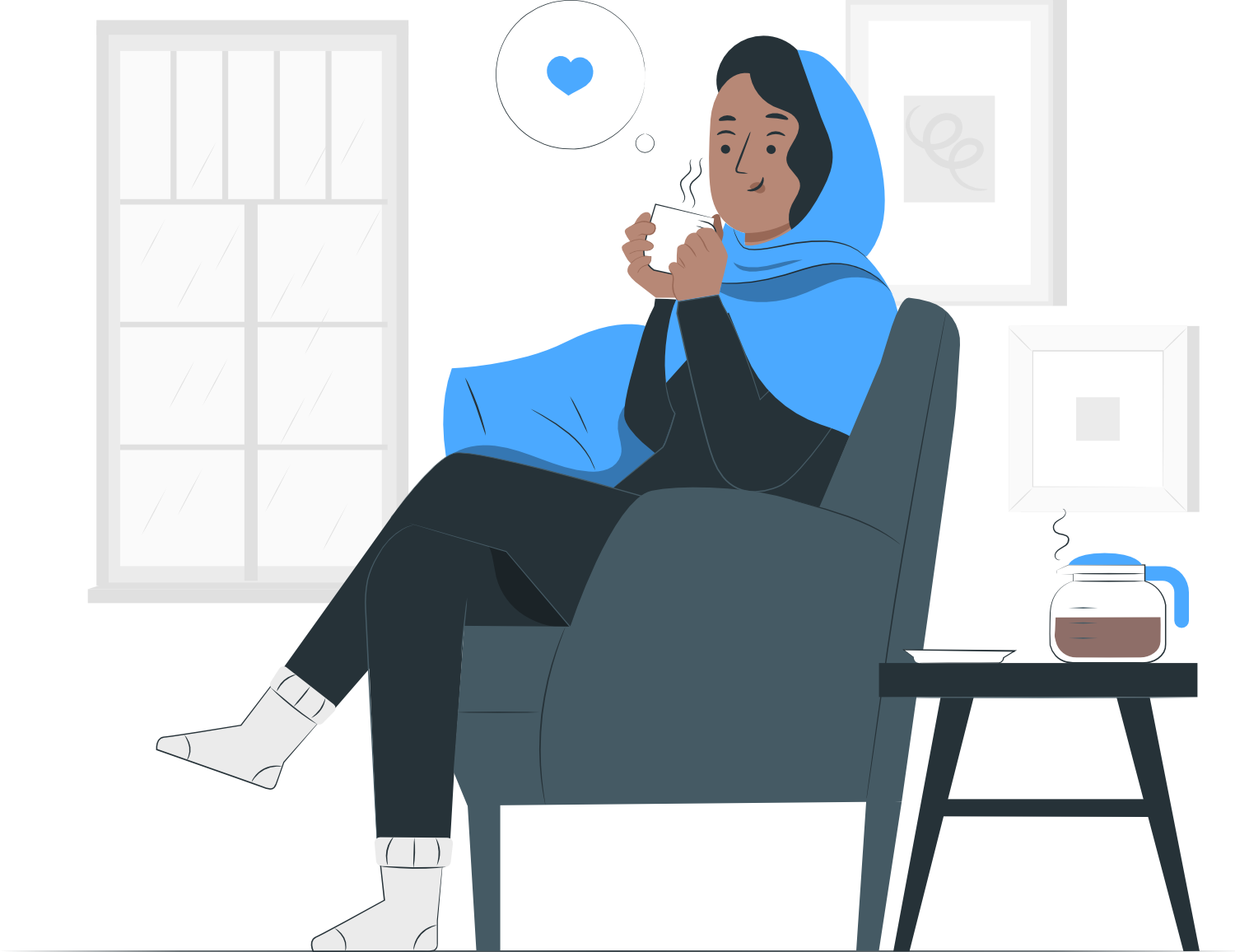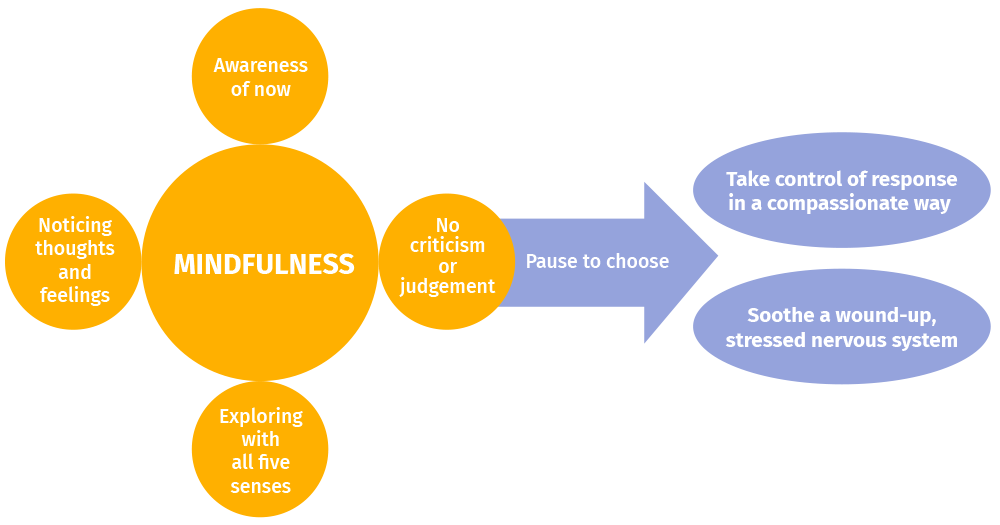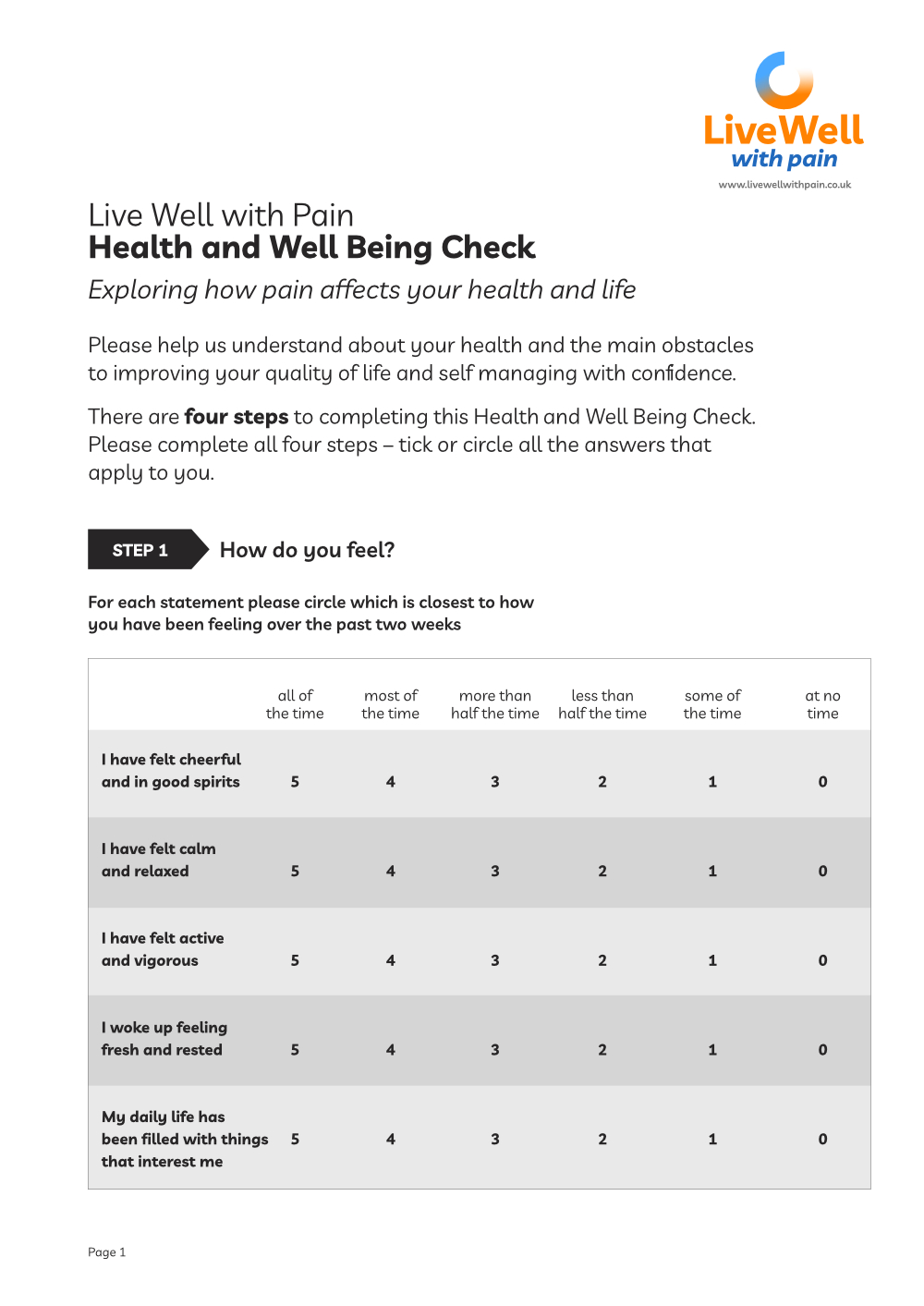Relaxation and mindfulness
Relaxation is an important strategy in managing pain, stress and sleep problems. As well as participating in enjoyable and well-paced activities, people living with pain can learn some key relaxation skills based around breathing, mindfulness and shifting the focus of their attention.
It is important for people living with pain to know that both relaxation and mindfulness practice are skills that need to be practised.
Practising them is an active process, not just something that happens by default when we sit down with a cup of tea.
Learning this skill takes a bit of time and the person with pain will need to work out which activities and practice are most beneficial.
Your role is to share some key information and options for people with pain to explore and encourage their use regularly. Be ready to explore and debrief the person about their choices and their experiments.

Actions you can take
Here are some ideas that you could suggest to the person you are working with:
Relaxing activities
These are activities that can be absorbing and distracting.
Examples include:
- Gardening
- Listening to favourite music
- Fishing
- Colouring/puzzles/crafting
- Mind-body exercise: Yoga, Tai-Chi, Pilates
All of these can also be done ‘mindfully’ to maximise benefits.
Guided relaxation
This includes things such as:
- Progressive muscle relaxation
- Breathing exercises
- On the spot arousal reduction (OTSAR) – see link below
- Distracting the mind to imagine being in a pleasurable environment e.g. walk on the beach
Mindfulness or meditation
Mindfulness is about training the brain to be in the moment, creating a pause between thoughts and feelings. It enables a choice in how to respond, rather than a reaction.
Mindfulness practices have been shown to be beneficial in the management of persistent pain.
There are many free resources available at libraries and online (see links below).
Learn about mindfulness
Mindfulness is now a mainstream practice to manage many mental health problems, chronic health conditions and even to manage mental well-being. It can be used effectively by people with chronic pain to help them to live better with their condition.
What is the evidence base?
A recent systematic review and meta-analysis of 38 RCT studies investigating outcomes of mindfulness interventions for chronic pain patients, (Ann Behav Med. 2017; 51 (2)) noted the limitations of much of the research in this area. Many studies, for example, are small scale and heterogeneous, including patients with different types of persistent pain. Nevertheless, accepting these limitations, the authors found a statistically and clinically significant reduction in depressive symptoms and an improvement in quality of life. A small reduction in pain was also reported but this was statistically insignificant.
The four components of mindfulness
Mindfulness is a skill and needs to be learnt and practiced regularly. It has four components, as illustrated in this diagram:

How can the person with pain learn mindfulness?
The person you are working with may have access to mindfulness groups through IAPT or local charities such as MIND. There are also numerous self-help resources available and some of these are listed below.
Resources you can use with the person you are supporting
Relaxation resources
A rich collection of free audio resources has been developed by:
Cumbria, Northumberland, Tyne and Wear NHS Foundation Trust
Breathworks is a phenomenally rich collection of online resources and courses for all people with pain and their clinicians.
Breathworks website
Oxford Mindfulness Foundation offers course, resources, audio recordings and short videos
Oxford Mindfulness website
Books
Living Well with Pain and Illness: The Mindful Way to Free Yourself from Suffering
by Vidyamala Burch, Piatkus Books 2008
Also available as an audiobook, with downloadable meditations
Breathworks online bookshop
Mindfulness for Health: A practical guide to relieving pain, reducing stress and restoring wellbeing
by Vidyamala Burch and Dr Danny Penman, Piatkus Books 2013
In both print and audiobook formats
Little, Brown online bookshop
The Mindful Way through Depression: Freeing Yourself from Chronic Unhappiness
by Mark Williams, John Teasdale, Zindel Segal and Jon Kabat-Zinn, Guilford Publications
Waterstones online bookshop
Live Well with Pain Health and Wellbeing Check tool
The Live Well with Pain Health and Well Being Check tool is a self-completion, person-centred tool that can be shared easily with patients and clients.
The data from this completed tool will help identify the actual current impact of chronic pain on the individual and their health.
You can find a more detailed explanation of the Live Well with Pain Health and Well Being Check tool here.

Footstep 5 – Relaxation and mindfulness
Summary of key points
✔ Relaxation and mindfulness are skills that people learn and practice at regular intervals, like learning a language
✔ These activities are safe and evidenced to benefit mood and quality of life
✔ You can encourage people to choose relaxation methods that most appeal to them – there are many options
✔ By participating in a mindfulness course, people can become skilled in directing their attention to where they want it to be